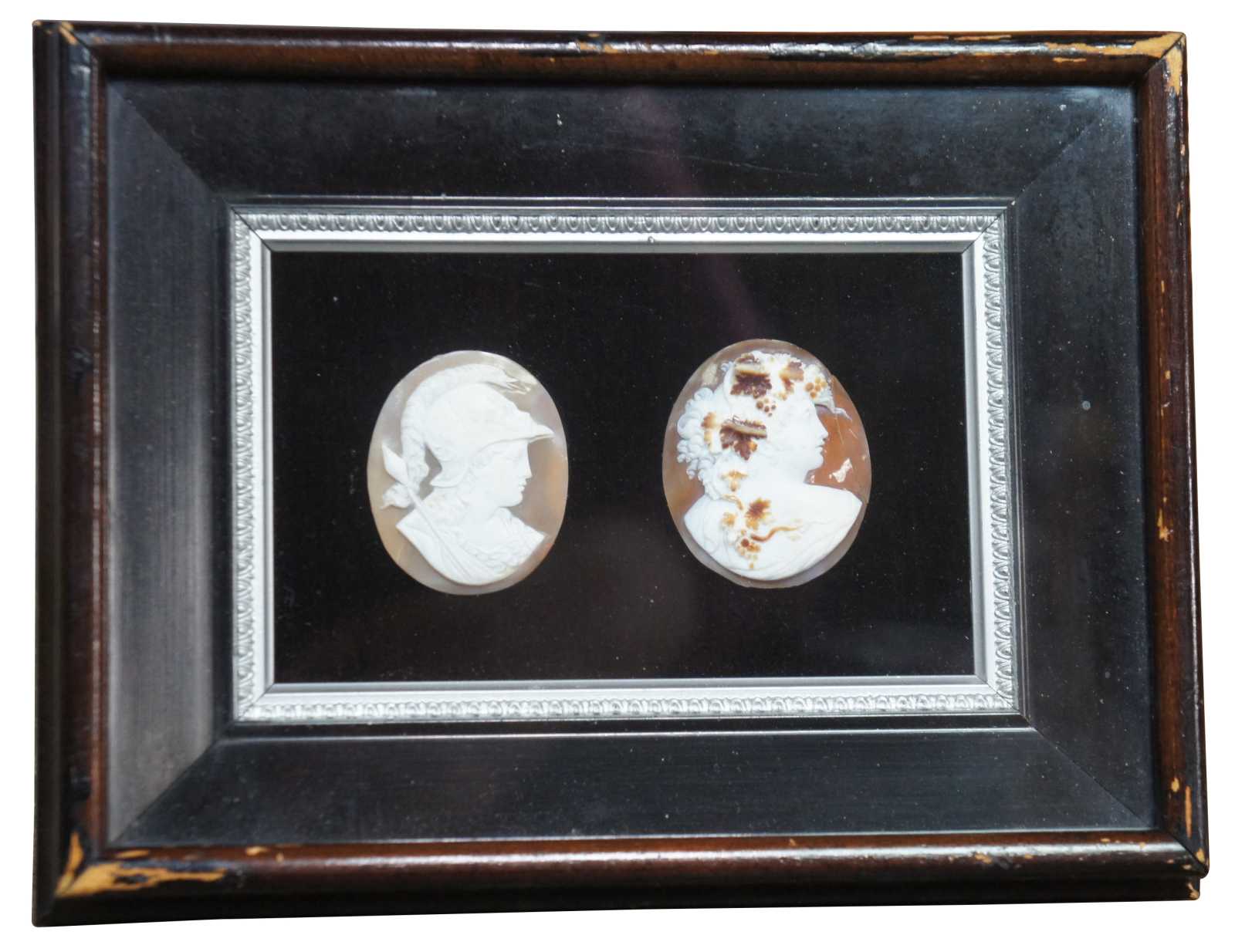
Shipping:
Free Shipping Included
Delivery:
Estimated 2-15 Business Days
Payments:
Credit Card, Check, Cash, PayPal, Apple Pay, Venmo
Returns:
30 Days 100% Money Back Guarantee, Buyer Pays Return Shipping
Description
Two antique 19th century carved Cameo shells featuring silhouettes of a man and woman. The woman is adorned with grapes and leaves, while the soldier holds a spear and wears a figural galea helmet with wings and serpent mohawk.
The most popular cameos today are carved in sea shells, a tradition that began in the fifteenth or sixteenth century and was popularized by Queen Victoria of England. Since that time, cameos have predominately showcased women’s profiles, and been worn by women who enjoy the beauty and craftsmanship of hand-carved cameos.
Yet cameos have not always been decorative jewelry for women. In fact, at different points in history they have been worn as frequently by men. While the birthplace of the cameo was nearly 300 years before the birth of Christ in Alexandria, Egypt, cameos owe their origins to ancient carving traditions. As far back as 15,000 BC, petroglyphs — figures carved into rock — were used to record significant events and communicate information. In ancient times people used cameos to depict an ethic or moral, or to make a statement about their faith or loyalties.
In the centuries since, cameos have been used for various purposes and decorated with a wide range of carvings:
Early Greek and Roman carvings featured images of gods and goddesses, themes from mythology, beautiful women and biblical events.
Many cameos through history depict living heroes or rulers.
In the Hellenistic era young women used cameos as charms to express desire. A woman could wear a cameo depicting a dancing Eros as a seductive invitation to love.
During the Renaissance, Pope Paul II was an avid cameo collector. According to history, this love ultimately led to his death. His excessive display of carved gems and stones on his fingers kept his hands so cold that he caught the chill that meant his death.
Cameos have been used on helmets and military accessories like breastplates and sword handles, on rings and other jewelry, and on vases, cups and dishes.
Women began collecting cameos to prove cultural status during the Elizabethan period. At the same time, tourist travels to the ruins of Pompeii were on the rise and women began collecting shell and lava cameos as souvenirs to remember their travel.
During the 18th century, men purchased carved gems to mark their prestige and culture.
Cameos enchanted Napoléon, who wore a cameo to his own wedding and founded a school in Paris to teach the art of cameo carving to young apprentices.
Not until the nineteenth century, when the popularity of shell cameos grew — reducing the use of hardstones or agate — did profiles become as popular a subject matter as they are today.
Condition
Good antique condition, crack to right cameo and wear to frame.
Dimensions
8.25 x 1.5 x 6.75